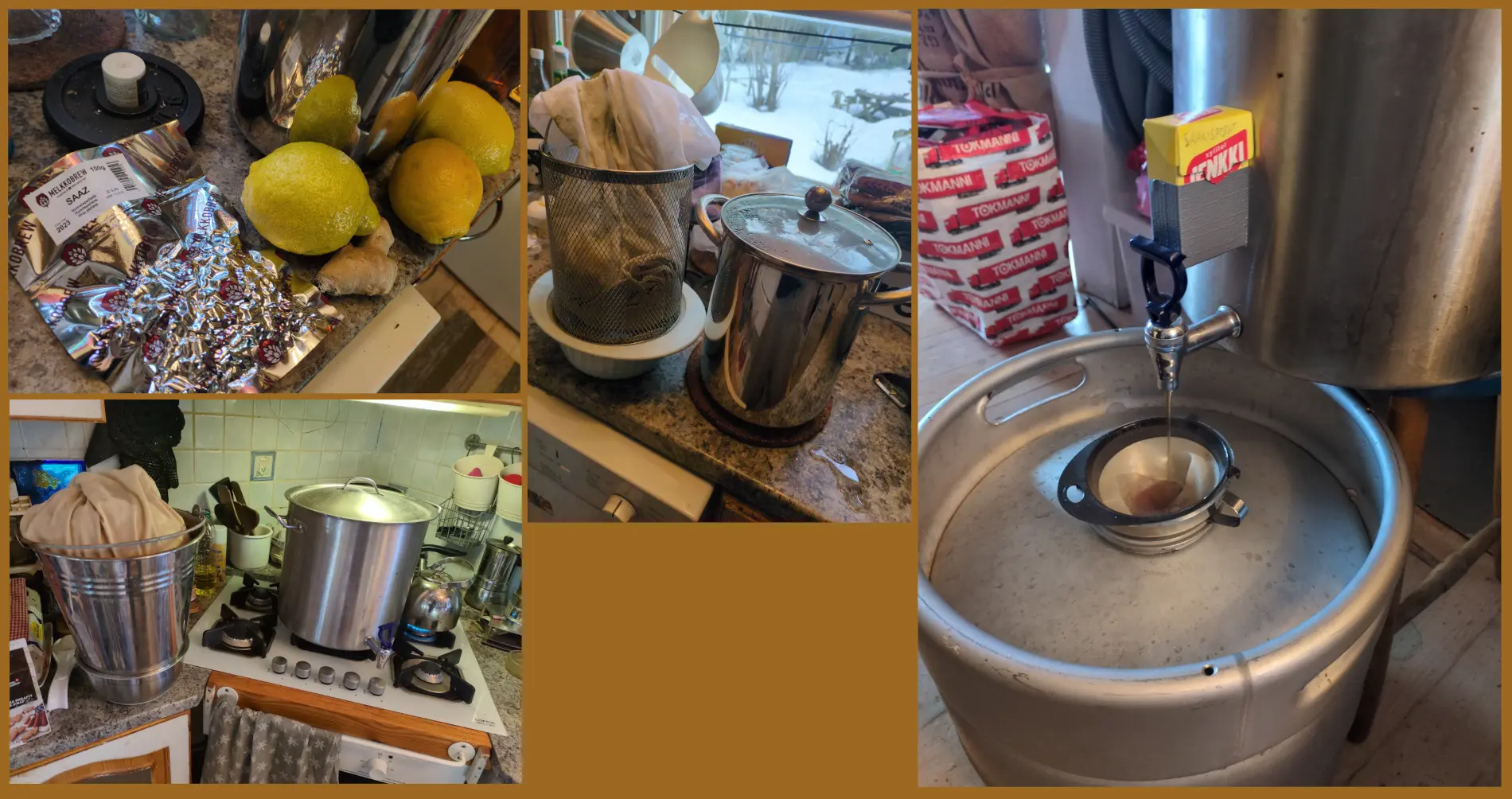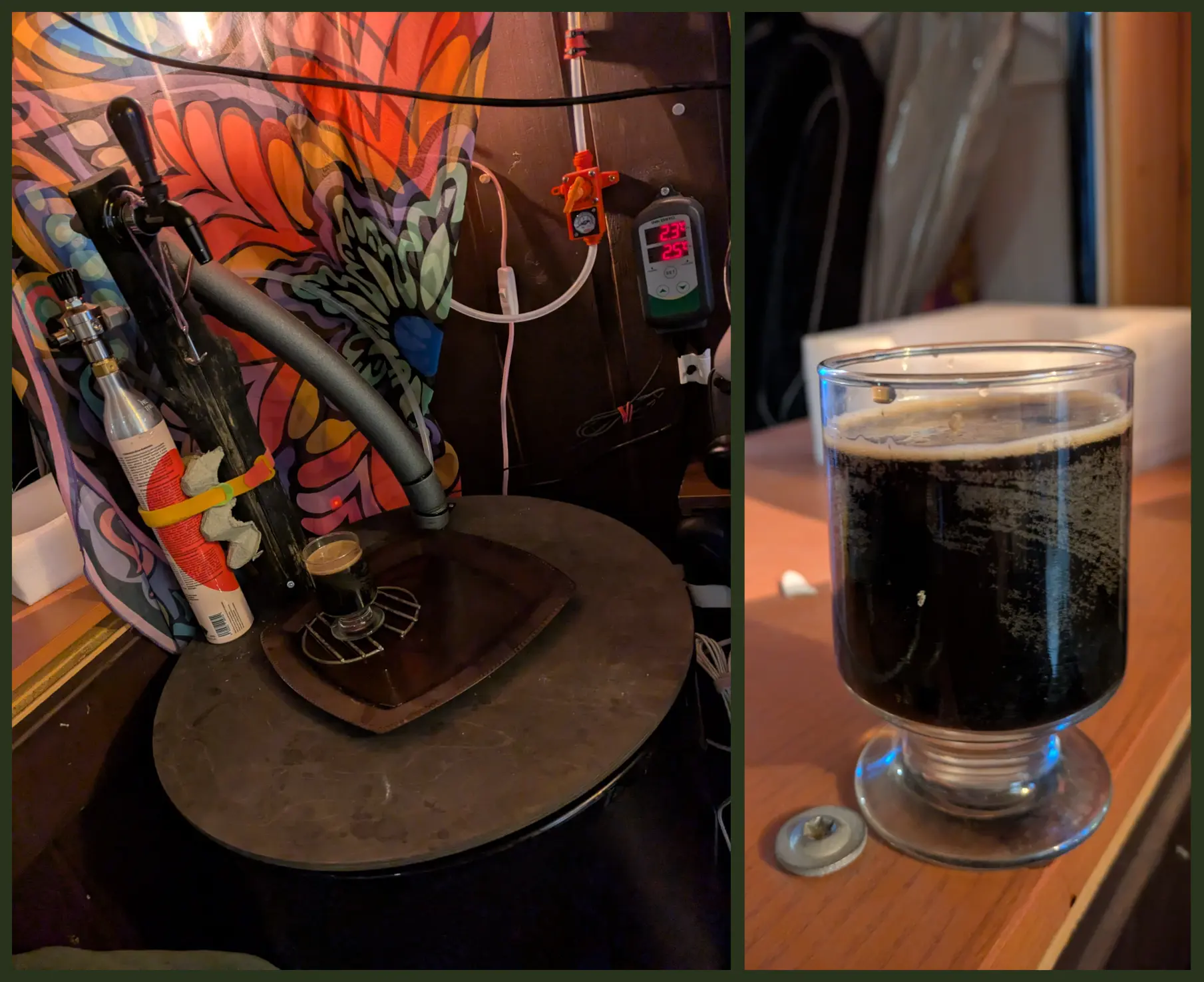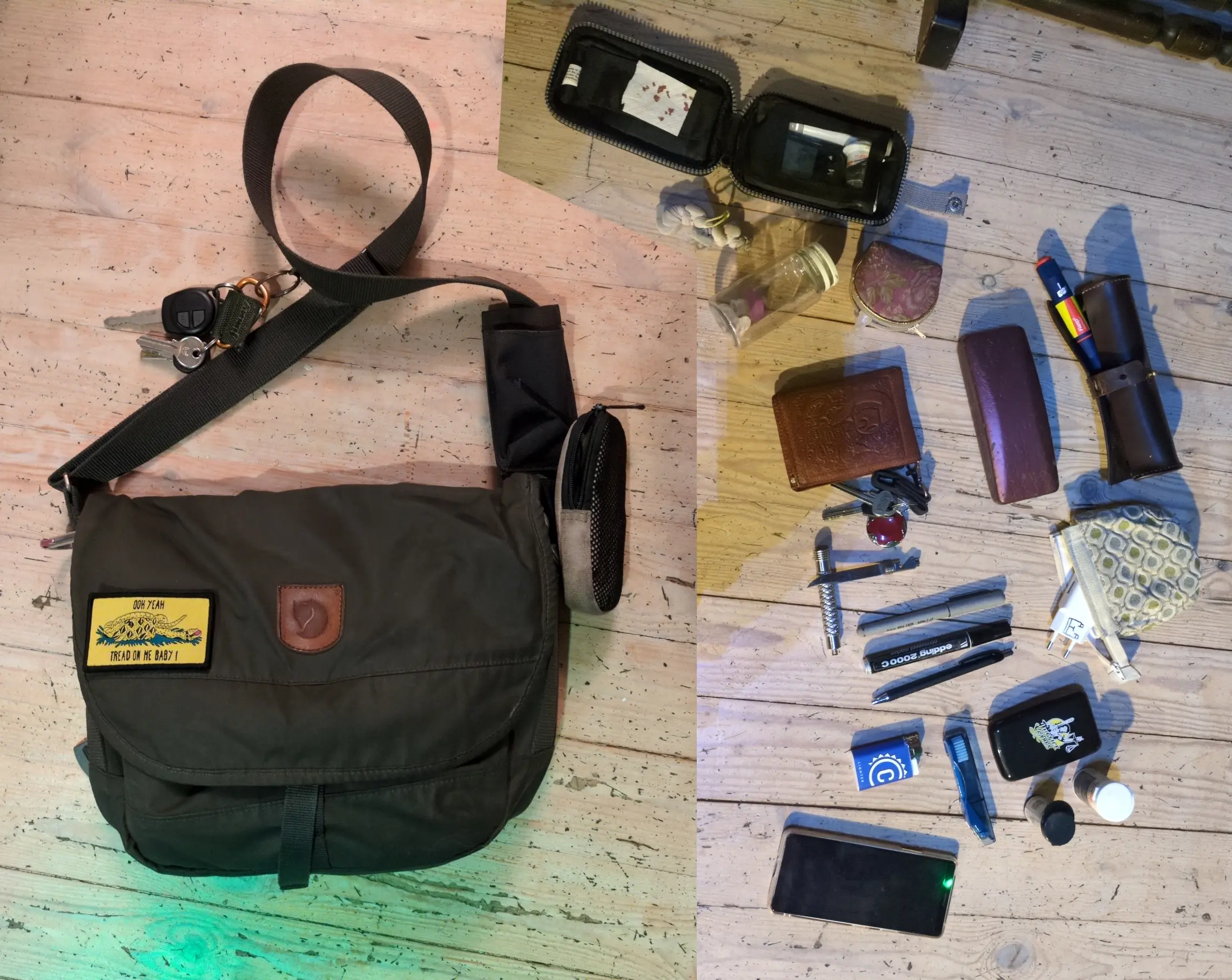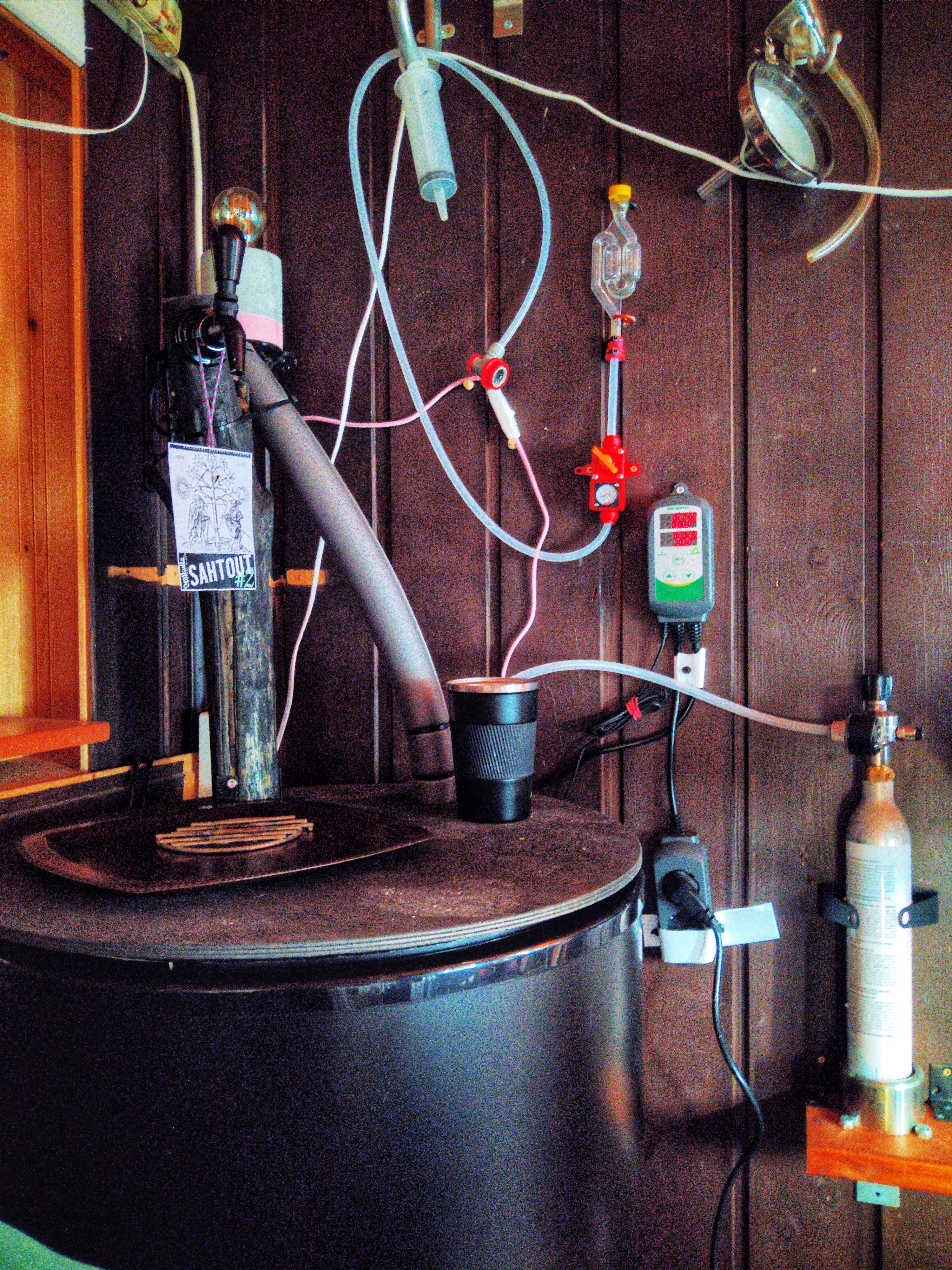I've recently developed a taste for Blanc 1664, a lemon lager that's produced in bulk by one of my country's big industrial brewers. I'm also a fan of ginger beers. Here goes an attempt to combine the two on a more robust malty foundation than what the store options offer.
I've brewed successful ginger beers before, but my first attempt with lemon in the mix didn't have nearly enough lemon, and the ginger was too strong. Triple the lemon and half the ginger this time around. Didn't check the pH (I only have a full-scale kit that would leave me none the wiser), remains to be seen how it ferments.
Malts are three parts Simpson's Maris Otter Pale Ale, two parts Viking Munich Light and one part Simpson's Premium English Caramalt. I'm trying fancy Saaz hops for the first time – had to look up a few forum discussions on how it's supposed to be used, and as per popular opinion I put a good dollop of the pellets in at the beginning of the boil alongside a little bit of Challenger. I'm hoping my trampling on traditions and not making a po-faced lager with the stuff isn't going to trigger a flame war :D
Lemons, ginger and a fair bit of Saaz and Amarillo hops went into the smaller kettle in a filter bag. I've done this before – not boiling the 'late addition' hops but instead infusing them like tea, and it seems to work great. The smaller kettle is filled with boiled water and let to sit with the lid on for more than the duration of the boil. When there's 10 minutes of boiling left, I add the infusion into the big kettle and burn vigorously to bring back the boil for the last few minutes.
In the picture with the big kettle on the stove, there's a bit of an innovation handed down to me by the previous owner of my brewing gear: a steel bucket with holes drilled in the bottom. I put my own spin on the idea by sitting the bucket on a smaller steel container. The mashing bag can be left to drip there, and I can also heat some water to my mashing temperature and pour it onto the mash bag to get a little bit more goodness out.
One more thing that I've come to appreciate is a pair of reusable coffee filters. Great for filtering while running the kettle into the Kegmenter. Also great for putting a tea filter bag with hops in and adding yet more hops at the last moment before the wort is laid to rest in the fermentation vessel :)









We have firewood shelters (including the very important 1 m³ treasure trove of little sticks), making fire is very easy at this site :D